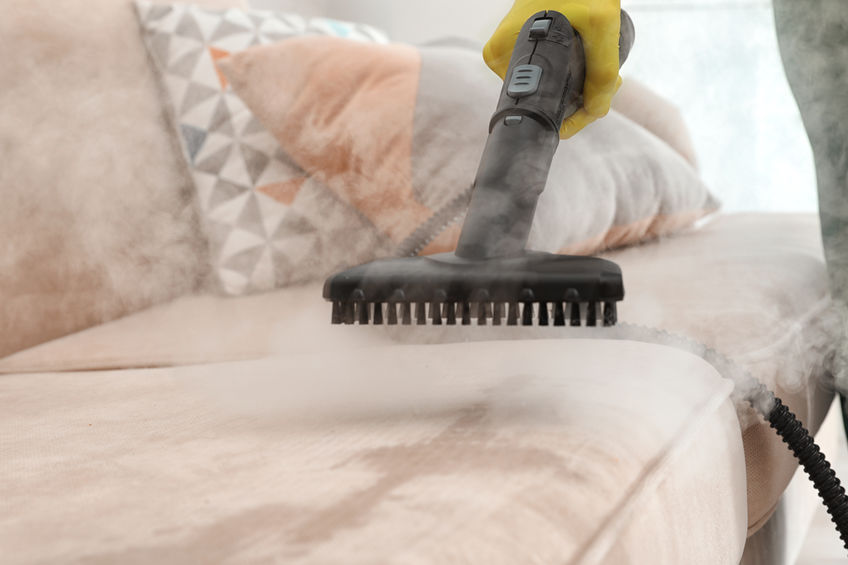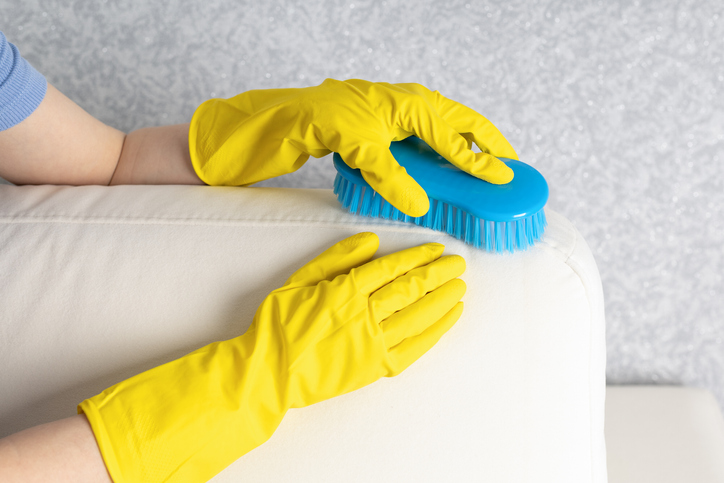- Clean Home
- Clean
- Deciphering Upholstery Cleaning Codes
Deciphering Upholstery Cleaning Codes
 Deciphering upholstery cleaning codes.
Deciphering upholstery cleaning codes.A guide to deciphering upholstery cleaning codes. Fabrics that have absorbed a season's worth (or longer) of dirt, body oil, and germs need a bath to prepare them for another season of entertaining - and for that close inspection from visiting friends and family.
Before you begin, locate the manufacturer's upholstery cleaning tag on the sofa cushions or chair. Check the label's recommended cleaning method.
Similar to clothes care labels with symbols communicating washing and drying instructions, upholstery cleaning has its own code.
This code can be tricky to decipher, so if your upholstered furniture doesn't have a code, it's best to test one of the cleaning methods below on a hidden spot first to prevent any potential damage.
Deciphering Upholstery Cleaning Codes
Here's how to decipher what you'll find on an upholstery care label:
O = Clean with cold water because the upholstery is made from organic materials.
S = Clean with a mild, water-free, dry-cleaning solvent. Use just a little solvent, and ensure you have plenty of ventilation. Do not use water or water-based products on this item.
W = Clean with a water-based product, such as a bit of foam from a mild detergent or non-solvent upholstery shampoo. Use as little foam and water as possible to do the job; you don't want to get the upholstery too wet. Moisture encourages mold, mildew, and bacteria to take up residence.
WS = You can use a dry-cleaning solvent, mild detergent foam, or upholstery shampoo.
X = Don't clean it yourself. You can, however, vacuum or brush off surface grime. Hire a professional when a deeper cleaning is required.
Deciphering Upholstery Cleaning Codes - The Cleaning Routine
 Deciphering Upholstery Cleaning Codes
Deciphering Upholstery Cleaning CodesWhen you're ready to clean upholstered furniture, follow these four basic steps to ensure that the job is done right the first time.
1 Start with a Vacuum
Start with a vacuum. Vacuum the surface, cushions, the body below the cushions (where crumbs, quarters, and remote controls hide), and behind and under the furniture piece.
Then, brush with an upholstery brush to dislodge surface dirt and dust, following the vacuum path so you don't miss any area. Vacuum the dislodged dirt.
2 Get on a Roll
Store-Bought Product versus Your Pantry
Carpet and upholstery freshening powders exist, but it's so easy to make your own natural solution. If you really want to impress fellow clean freaks, quickly remove any lingering odors with baking soda.
Use a cheese shaker, sprinkle a thin layer of baking soda over carpets or upholstered surfaces. Let sit for 15 minutes or overnight, then vacuum clean. Aren't you the thorough one!
Go over the main body and cushions with a lint roller, following the vacuum and the brush path. This will bring out stubborn pet hair and resistant dust.
3 Clean with Foam
Clean with foam. This step is for water-tolerant upholstery only - do not use it if your upholstery is coded S or X.
Whip equal parts dishwashing liquid and water.
Apply the resulting foam to the upholstery. Work the foam into the upholstery with your fingertips so it does not stain the fabric. Let it sit for 5 minutes.
4 Blot-Rinse (But Don't Saturate)
Blot rinse, but don't saturate the fabric. Again, this step is for water-tolerant upholstery only—do not use it if your upholstery is coded S or X.
Using a sponge dampened with water, Remove the soapy foam from the cleaned areas. This will be easier if you have a bucket of clean water handy.
Blot dry with a microfiber or cotton cloth, soaking up as much moisture as possible. Let air dry completely before the family takes a seat.
Final cleaning tips:
- Protect your upholstered furniture from direct sunlight.
- Rotate and reverse cushions occasionally so they will fade evenly and receive equal wear.
- Monthly upholstery cleaning should include vacuuming the furniture with a soft brush attachment to remove surface dust and dirt before they become ground-in upholstery stains.
- Clean Home
- Clean
- Deciphering Upholstery Cleaning Codes







